After blasting around the bush on a bunch of big, heavy adventure bikes I was quietly looking forward to a ride on Honda’s compact CB500X. Don’t get me wrong – I love a blat through the bush on a big-bore adventure weapon, but I can also appreciate the advantages of having something a bit lighter when riding on loose, uneven surfaces, as well as for weaving through pesky city traffic.
And light and compact the CB500X is, weighing in at just 198kg ready to ride. Throw a leg over the seat and it’s easy to pull the X up off its sidestand. And while said seat isn’t exactly low at 834mm, it’s narrow where it meets the tank which makes it easy enough for shorties like me to plant both feet on the ground.
Top heavy the CB500X is not, and the fact that it carries much of its weight low in the frame makes it easy to manoeuvre at low speeds, which is certainly beneficial around town. As is the upright riding position, easy to reach and wide handlebar, neutral rider’s triangle, effective vibe-free mirrors, miserly fuel consumption, decent engine performance, light and progressive clutch, low first gear… yep, the CB500X has the commuter-bike thing nailed.
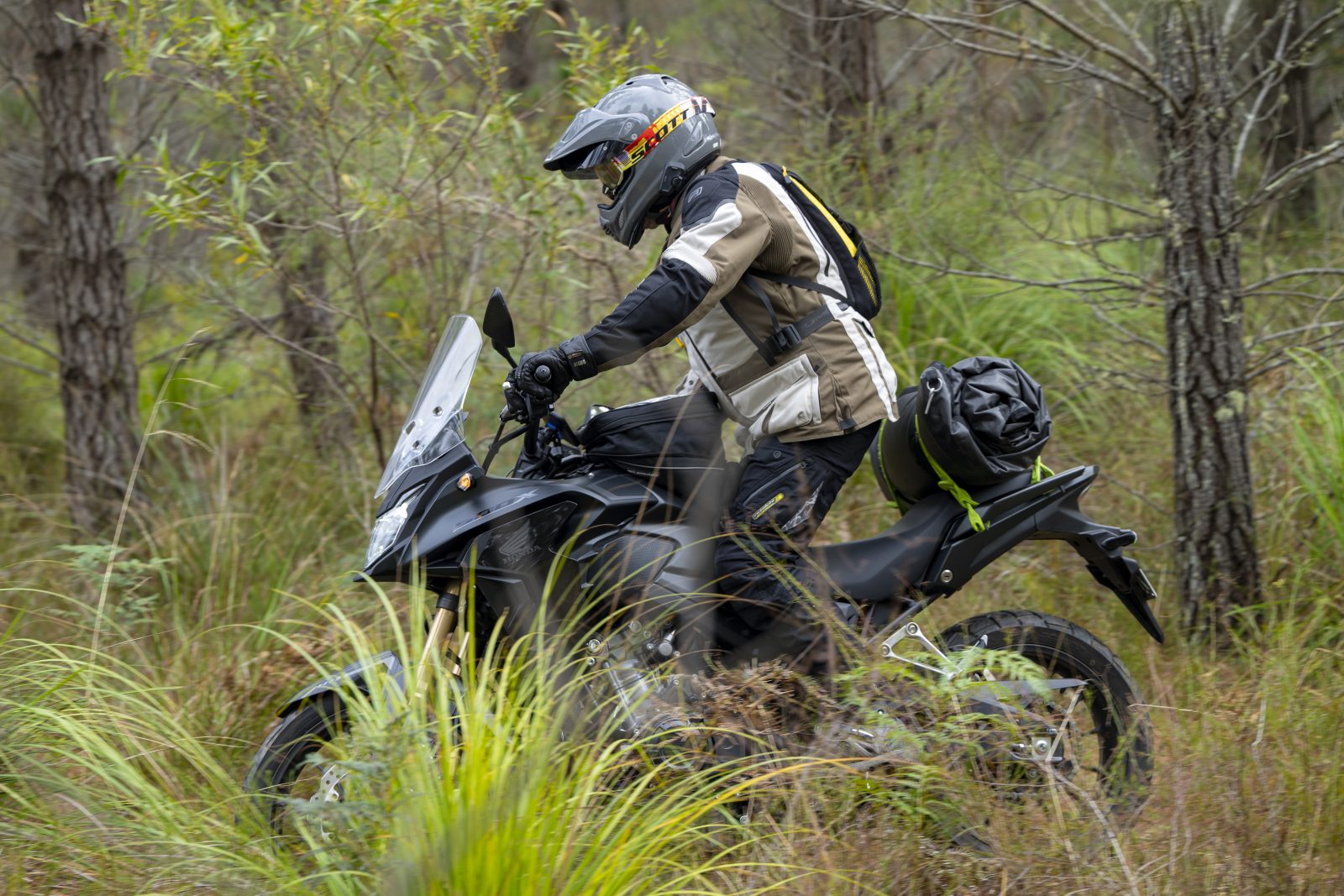
But the CB500X’s remit extends far beyond it working its way through heavy traffic in the city. As Honda says, this is a bike that’s “ready for adventure”. So, what is it like out of town?
Well, the first thing you’ll want to do before heading on an adventure is pack and strap your luggage, and for this the CB500X’s pillion seat makes a great platform, and the generous pillion grab rails have small protrusions underneath that hold straps in place and make it easy to secure bags, swags and other gear.
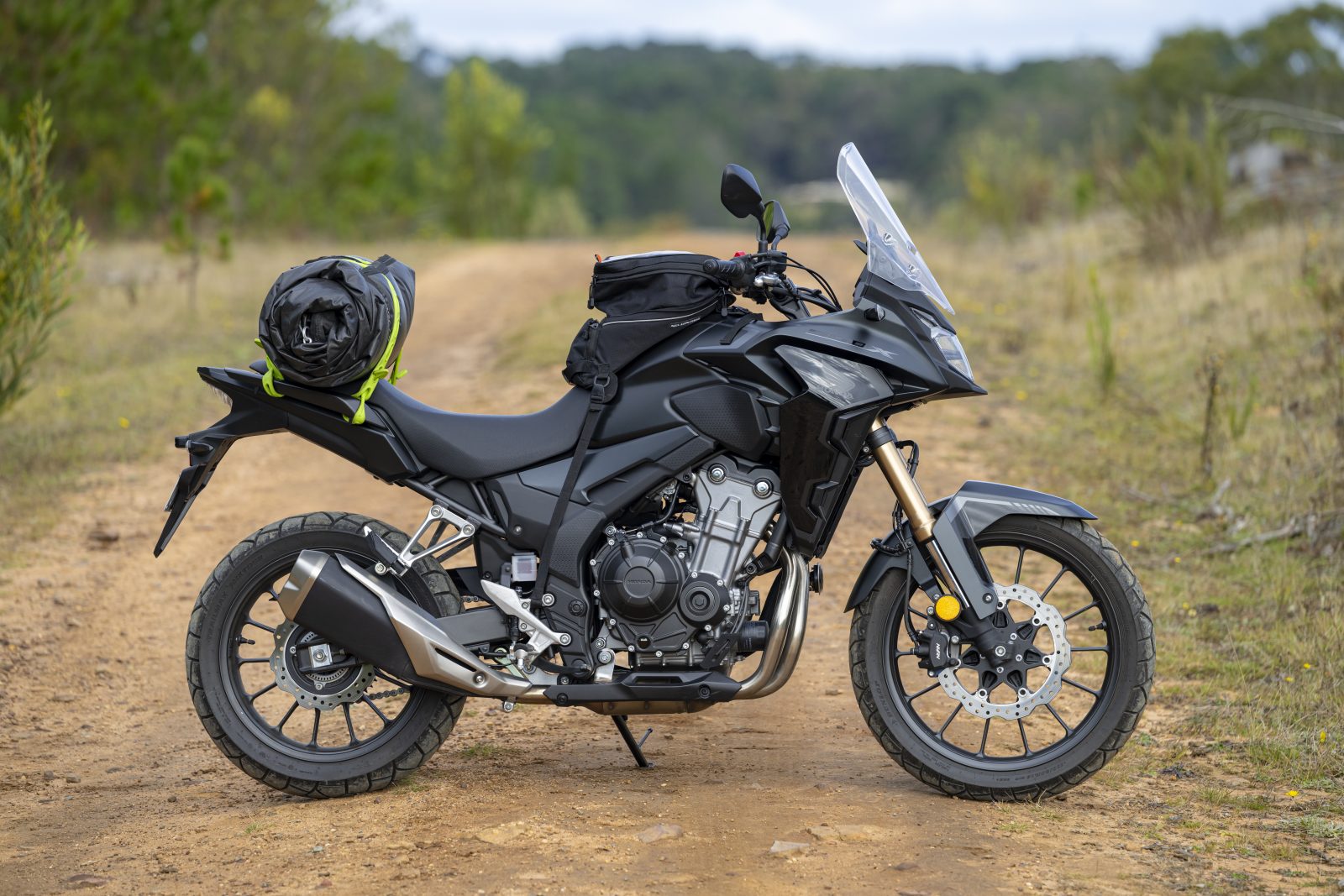
For serious luggage carrying, Honda offers a range of optional accessories including panniers ($1026.36), a 36L topbox ($809.59) and base ($88.36), a rear-seat bag ($234.86), a tankbag ($198.85) and a rear carrier rack ($584.95). Even without these extras, I easily managed to secure my swag to the back and a tank bag up front, although for the latter I had to run the rear straps all the way down to the ’peg mounts, as the bike’s plastics don’t allow access to the frame.
Loaded up and ready to roll, I was soon cruising along the highway at a 100 clicks with the tacho indicating a tad over 5000rpm. Getting up to cruising speed doesn’t happen in a mad rush, but there’s more than enough power on tap for modest acceleration. The engine can feel a little doughy lower in the rev range, but the midrange offers decent response that improves as revs climb towards the 8500rpm redline. It’s a power curve that’s ideally suited to novice riders and, as such, the CB500X could be considered a good entry-level bike that’s well suited to those who are just getting into adventure riding.

Of course, if you’re really in a hurry and you feel the need to keep up with your mates on more powerful adventure bikes, the little Honda will happily cruise along at 120km/h or more, and I reckon a keen rider could eke 150km/h or so out of it, but if you’re doing that regularly you’ve probably bought the wrong bike.
At highway speeds, the windscreen deflected air cleanly over my helmet and I didn’t experience any buffeting around the peak of my lid. That was with the screen set in the lower of its two positions, but bear in mind I’m only 167cm tall. Adjusting screen height is ridiculously complicated, and involves undoing several bolts, removing the screen, repositioning it and doing up all the bolts again. It really is a set-and-forget affair, and no, I didn’t try it in its taller position.

The six-speed gearbox shifts smoothly up and down the ratios, and the slipper-assist clutch prevents rear-wheel lock up when downshifting, which is particularly handy on slippery surfaces, such as when it’s wet or on gravel roads.
The Dunlop Trailmax Mixtour rubber looks well suited to light off-road duties but felt a bit sketchy on some of the more slippery off-road sections I encountered. I almost binned the CB500X braking into one muddy corner early in the day, and I took great care not to repeat the act, relying on the rear brake a lot more than the front when tracks looked particularly slippery.

The CB500X has a relatively basic specification, and other than ABS there are no other electronic rider aids, no rider-selectable modes and no quickshifter. With its modest output and relatively benign power delivery, the lack of traction control isn’t an issue much of the time. Even when riding on gravel, you can crack the throttle open without fear that the rear will unexpectedly light up and spear you off into the scrub. The only time TC might have come in handy on test was when trying to perform tight turns on slippery, narrow and uneven grass-covered tracks where the rear Dunlop struggled to gain purchase. But it was in such moments that I was glad to be astride such a light bike with a relatively low seat height – I reckon I would have struggled on a ‘full-size’ adventure bike – and I was riding well outside the CB500X’s design brief. In the rough, it exceeded my expectations of it.
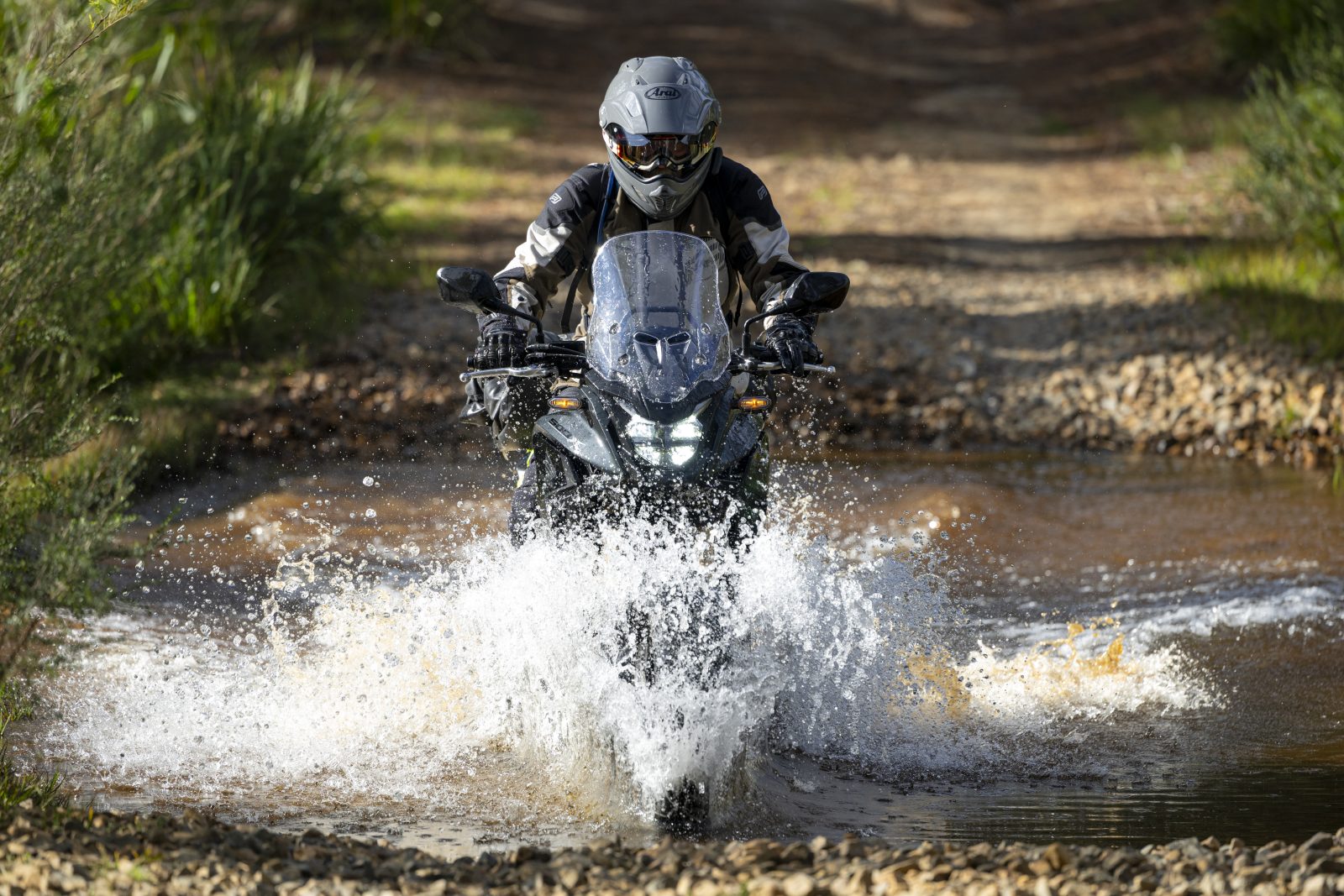
While non-adjustable, the Showa 41mm Separate Function Fork Big Piston (SFF-BP) works well, providing good control on the road and excellent damping.
The rear shock has preload adjustment, but it can be a bit tricky squeezing the c-spanner in between the frame and the chain guard, so I left it as it was, and found the standard setting was good for my 76kg and modest luggage load.
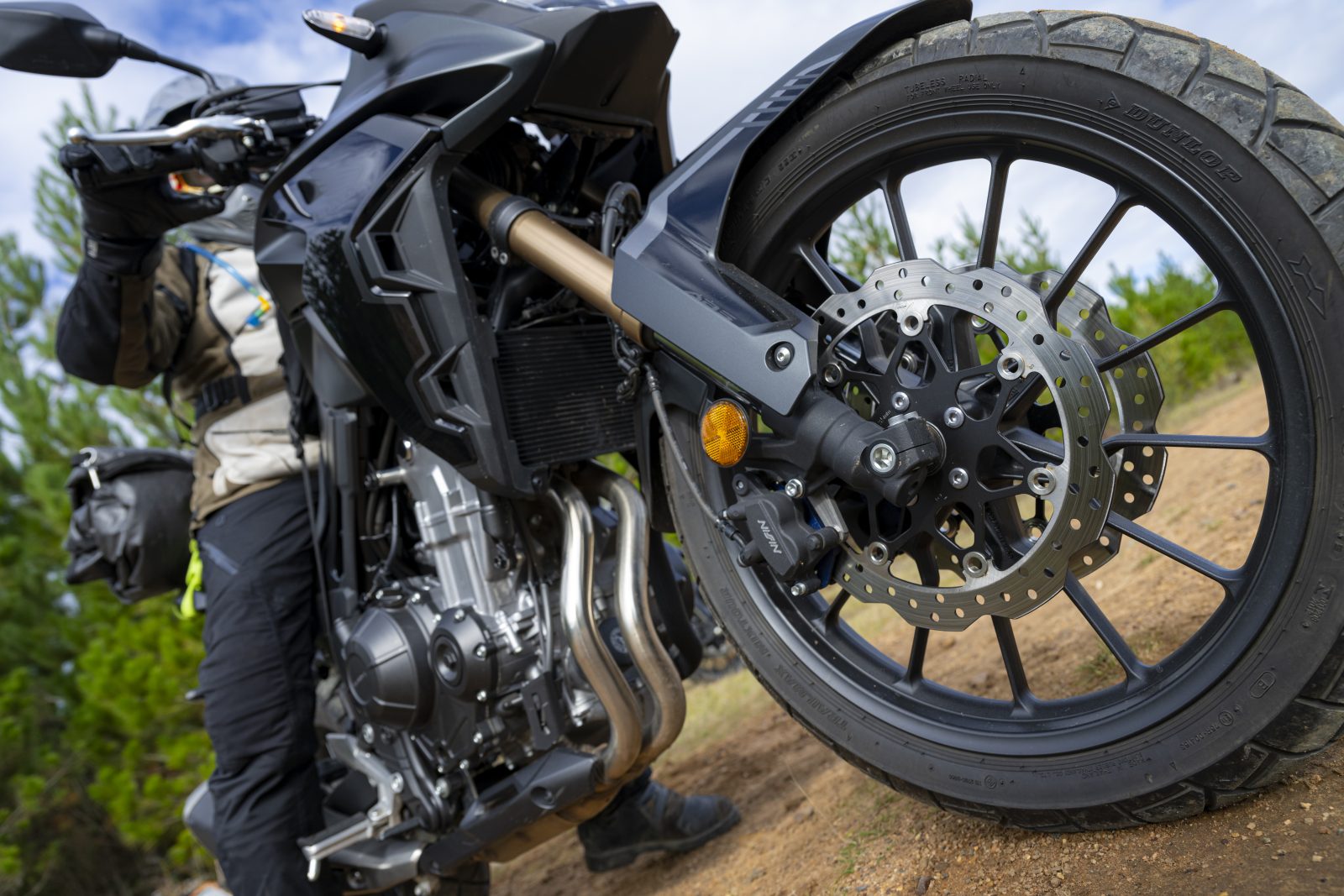
The suspension offers a generous-for-the-road 135mm of travel at both ends, which is as well suited to soaking up city potholes as it is touring on crappy backroads or gravel roads, but it’s not entirely adequate for serious off-road tracks of the kind photographer Watto asked me to ride up. Nevertheless, the CB500X’s 19-inch front wheel managed to crawl over fallen tree branches and through deeply rutted sections of track without too much difficulty, although the front-end bottomed out on several occasions while doing so. Speaking of crawling over obstacles, the CB500X runs alloy rims, so care should be taken not to hit obstacles too hard in order to avoid damage.
The handlebar is a little low for a comfortable stand-up riding position, and the footpegs could be a bit wider and offer more bite, but the tank is narrow where it meets the seat, which makes it easy to grip with your knees. Those expecting to do a lot of dirt miles should consider an aftermarket handlebar and ’pegs as an easy and affordable upgrade.
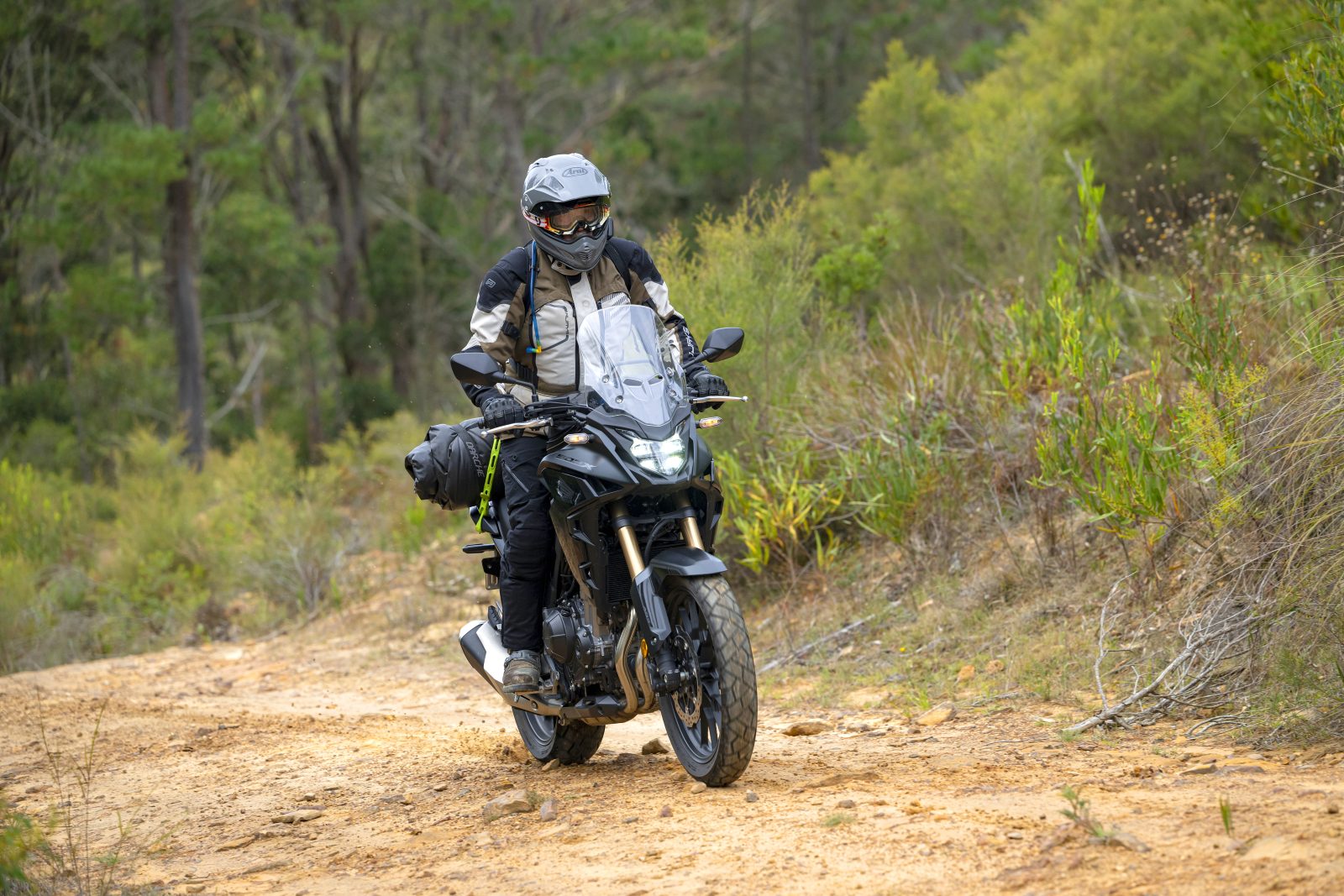
Oddly, the front brake lever has span adjustment while the clutch lever does not. The brakes themselves consist of a pair of fancy-looking 296mm petal discs up front gripped by dual-piston calipers, and a single petal disc at the rear gripped by a single piston caliper.
The front brake offers decent feel and power, but the rear brake lever was positioned a bit low in the stroke for my liking, and I really had to think about foot placement when using it; if it was my bike, I would adjust the lever position.
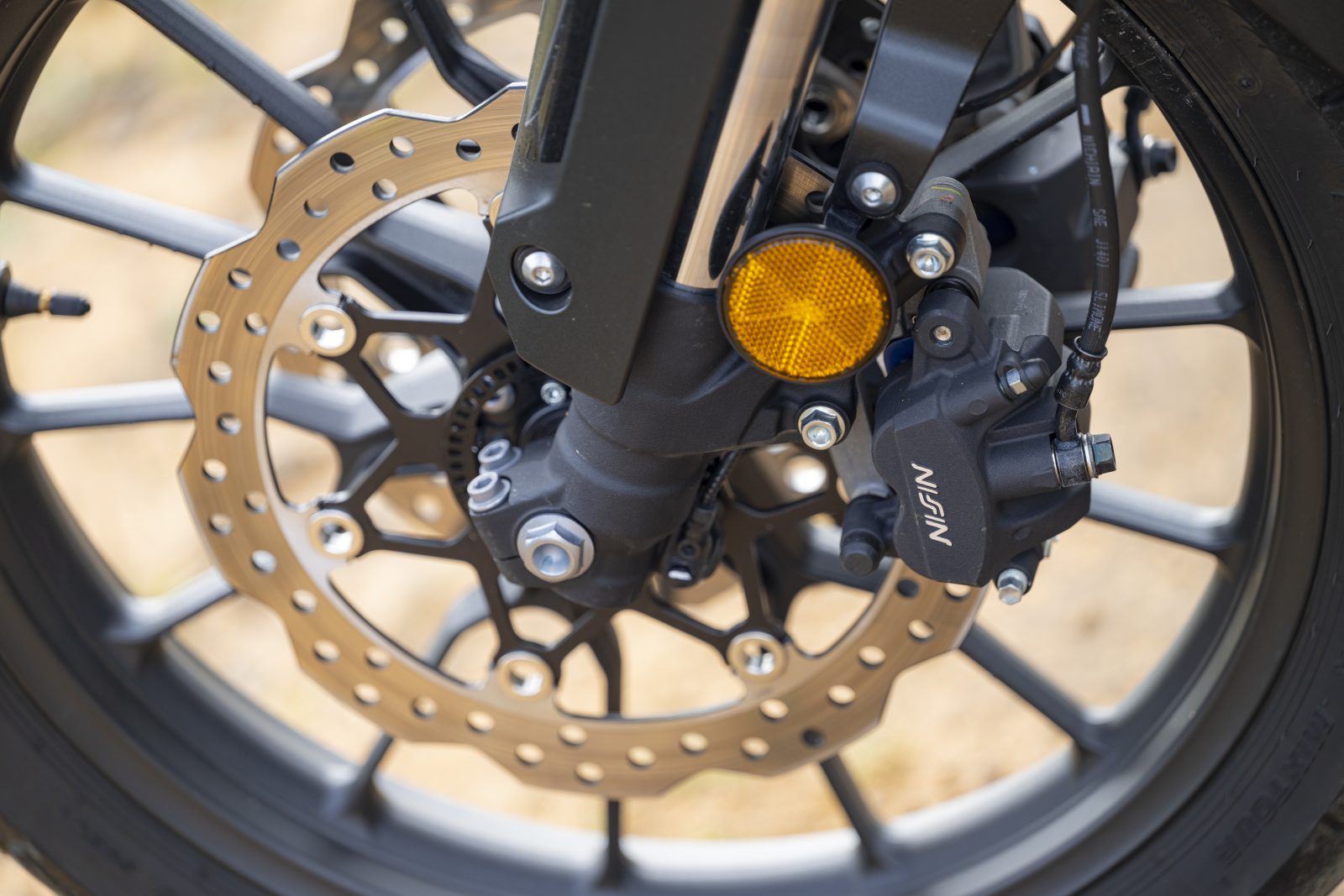
Although non-switchable, the ABS calibration works well on gravel, allowing surprising brake force before it activates to prevent wheel lock. Emergency braking is accompanied by a flashing of the hazard lights to alert following traffic that you’re stopping in a hurry.
Those who don’t like pulling over for fuel will love the range of the CB500X; on test it sipped the go-juice at a teetotalling 3.5L/100km, so with a sizeable 17.5L fuel tank you’ll get almost 500 clicks between refills! You’ll want to stretch your legs well before that though; the seat is quite firm and narrow towards the front, so numb bum can become an issue after a few hundred kays.
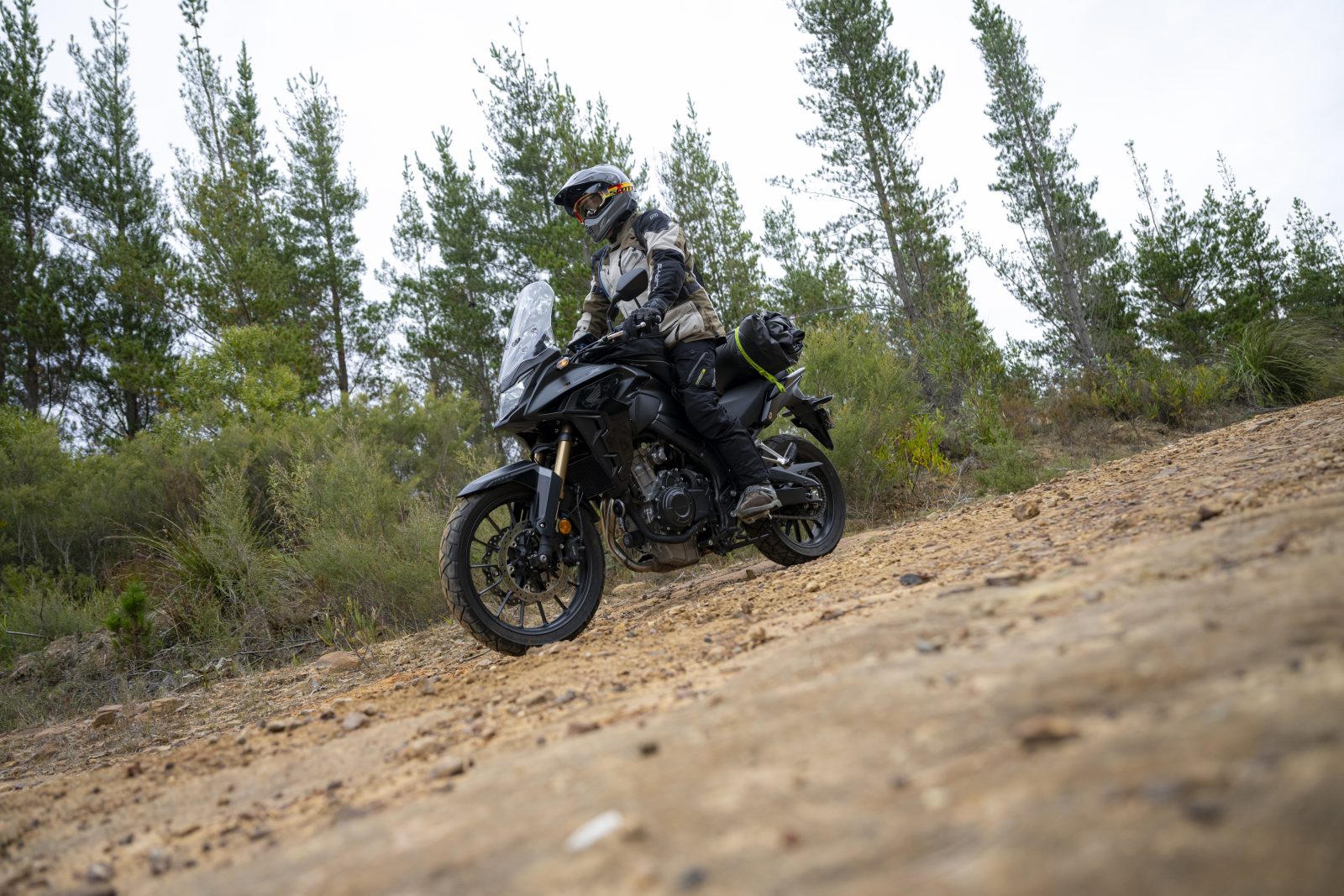
There’s a sturdy bar behind the windscreen that you could mount a GPS or phone too, while there’s also plenty of space on the handlebar for a phone mount or the like. A small-ish LCD dash displays all the information you’ll ever really need, with a large digital speedo readout, tacho and fuel guage always on display.
You need to scroll to display secondary info like odo, tripmeters, clock, fuel consumption, etc., and it’s all a bit small and hard to read on the move. The bright shift light is easy to see when illuminated though.
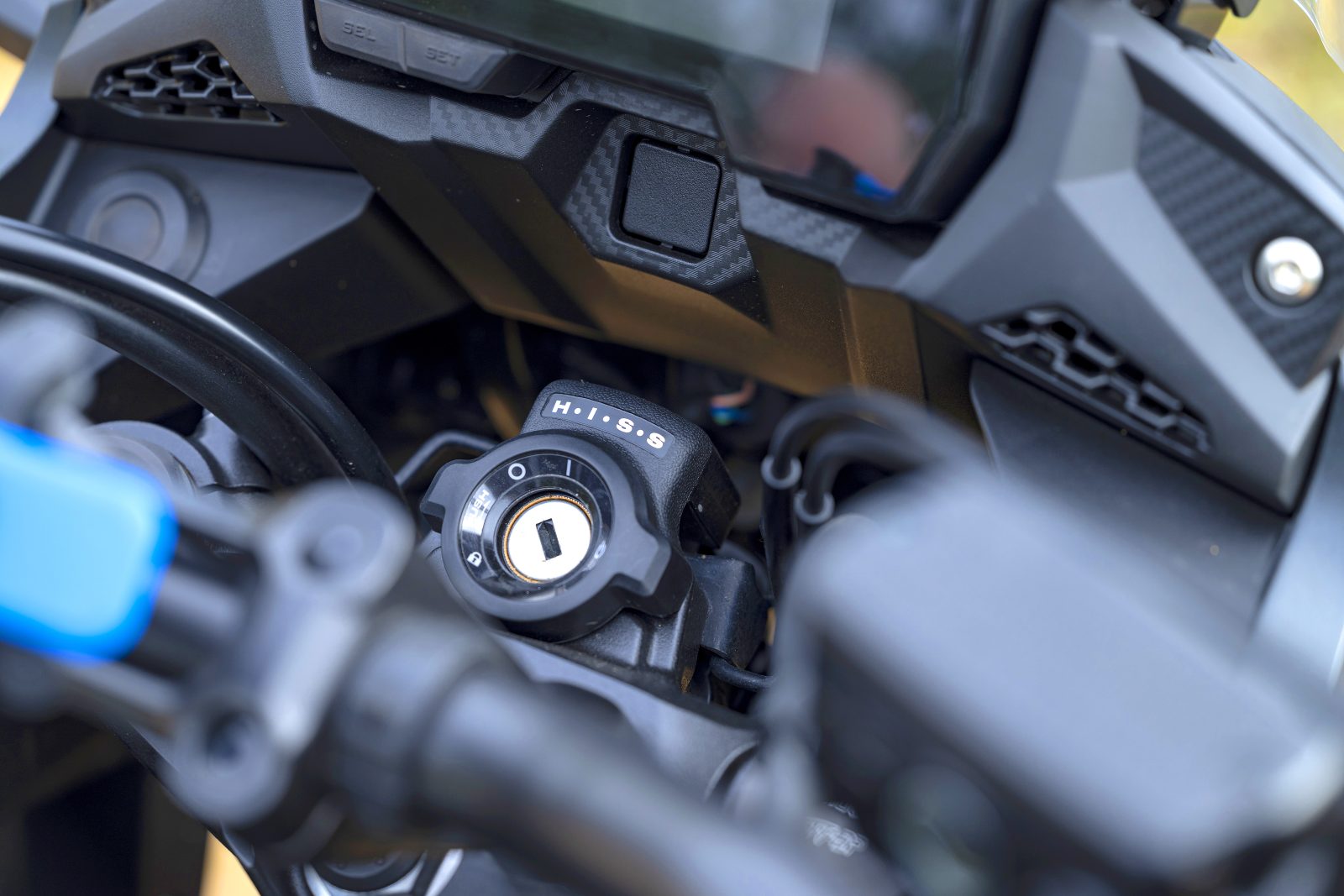
Below the LCD there is a blank where there should be a 12V outlet. As you’d expect, all of the switchgear and controls are pretty straightforward; as there’s no TC or ride modes, there are no complicated switches, buttons or scroll wheels. The left switchblock houses buttons for indicators, lights, passing button and horn, while the right side has the start button, kill switch and hazard lights… and that’s it.
For those who like to travel with a friend, the pillion seat is reasonably generous and there are big grab handles. As you’d expect of a Honda, build quality is up there with the best, and the CB500X has quality plastics and a good fit and finish. I reckon it’s a good-looking adventure machine too, with a small beak beneath the headlight and lots of sharp angles that clearly state ‘adventure’ but an inviting stature that won’t scare off those new to the adventure scene.

The CB500X really is a do-it-all bike, whether that’s commuting, touring or light-duty off-roading. It costs $10,199 plus on-road costs, which is around $11,200 ride away depending on where you live.
The nearest competitor in terms of specifications is the $10,690 ride-away Benelli TRK 502 X (AMCN Vol 71 No 08), which just undercuts the Honda on price but the CB500X is lighter and has a lower seat height.
A city commuter that can still cut it off-road? In this instance, the Honda CB500X really is a bike that lives up to the marketing spiel.
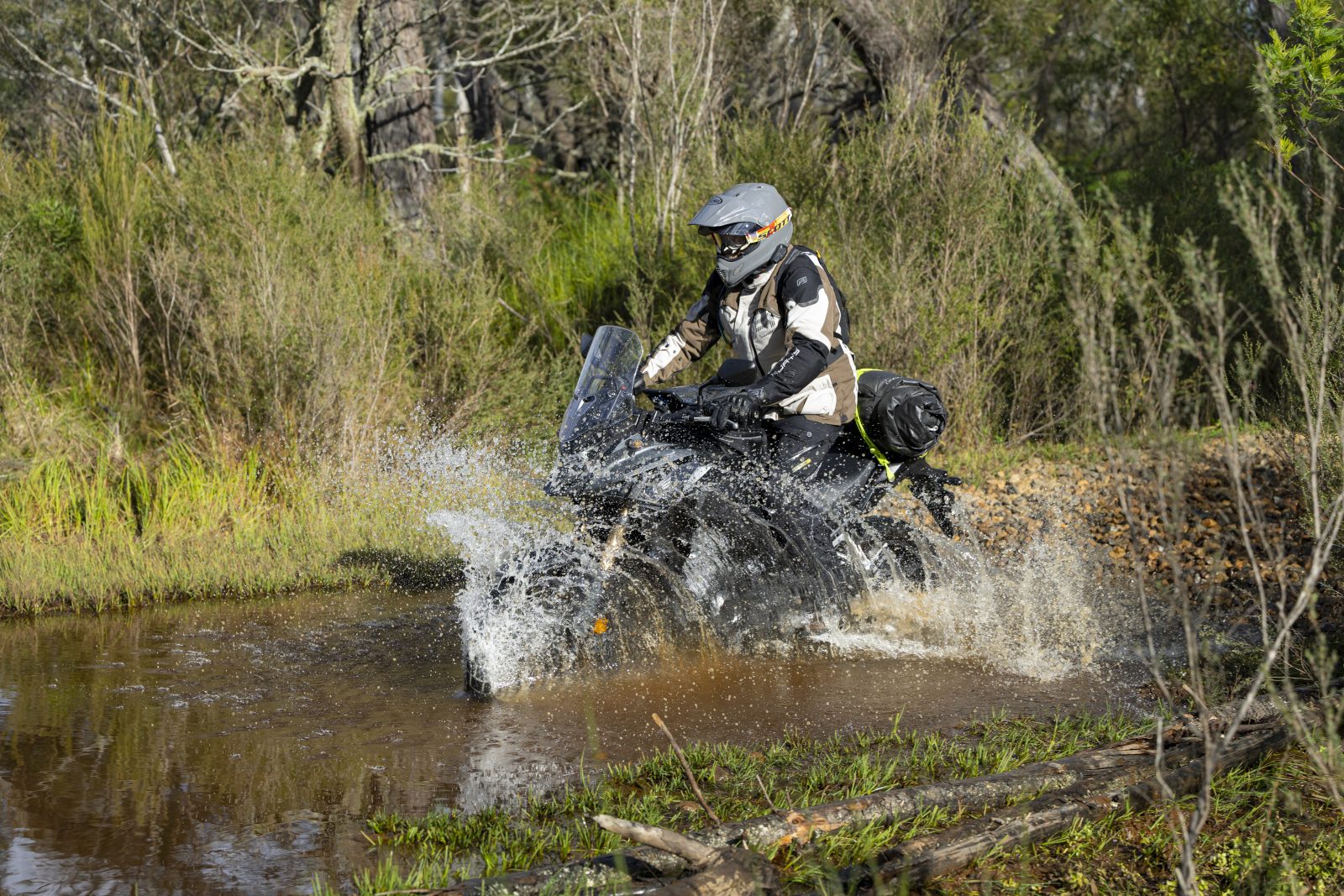
Test Dean Mellor + Photography Incite Images











